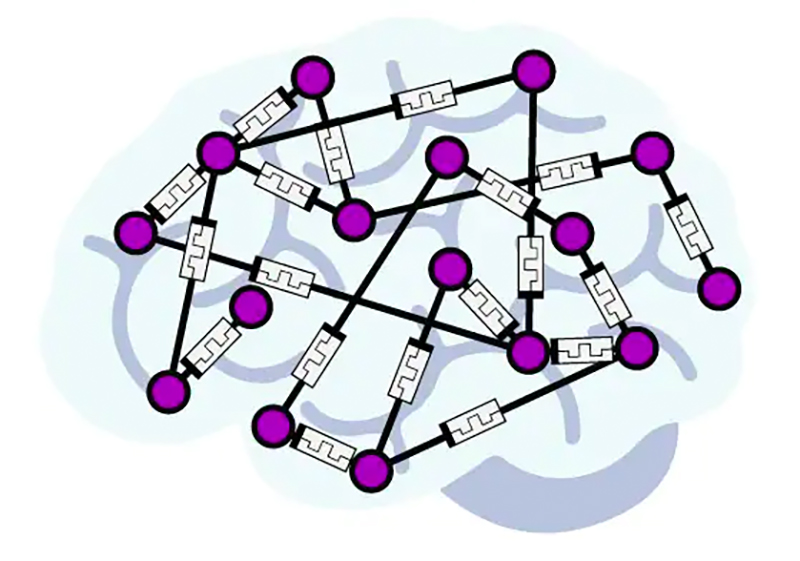The team used varying levels of electricity on a nanowire simulation, finding a balance when the electric signal was too low when the signal was too high. If the signal was too low, the network's outputs weren't complex enough to be useful; if the signal was too high, the outputs were a mess and also useless.
"We found that if you push the signal too slowly the network just does the same thing over and over without learning and developing. If we pushed it too hard and fast, the network becomes erratic and unpredictable," says physicist Joel Hochstetter from the University of Sydney and the study's lead author.
Keeping the simulations on the line between those two extremes produced the optimal results from the network, the scientists report. The findings suggest a variety of brain-like dynamics could eventually be produced using nanowire networks.
 Conceptual image of randomly connected switches. (Alon Loeffler)
Conceptual image of randomly connected switches. (Alon Loeffler)"Some theories in neuroscience suggest the human mind could operate at this edge of chaos, or what is called the critical state," says physicist Zdenka Kuncic from the University of Sydney in Australia. "Some neuroscientists think it is in this state where we achieve maximal brain performance."
For the simulations, nanowires 10 micrometers long and no thicker than 500 nanometers were arranged randomly on a two-dimensional plane. Human hairs can be up to around 100,000 nanometers wide, for comparison. TO READ ENTIRE ARTICLE, CLICK HERE...

No comments:
Post a Comment